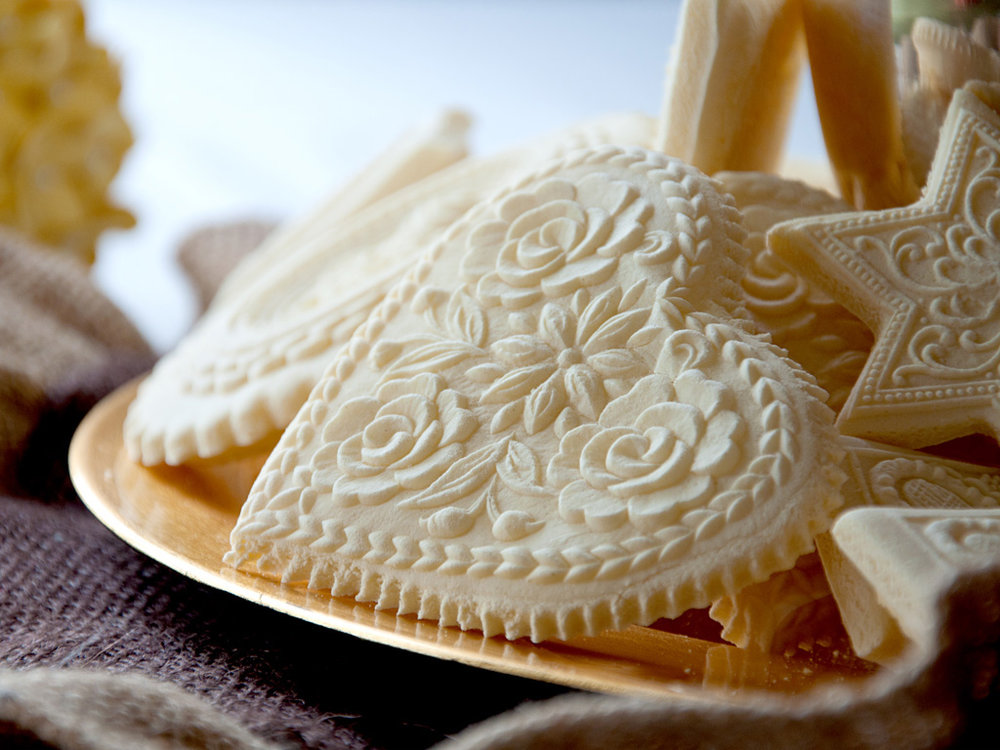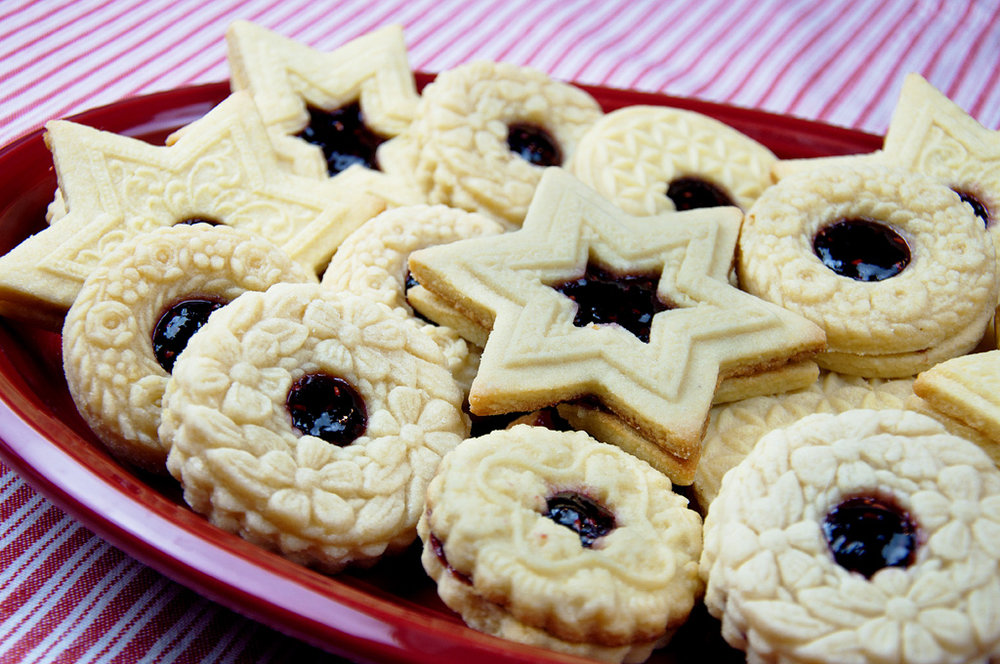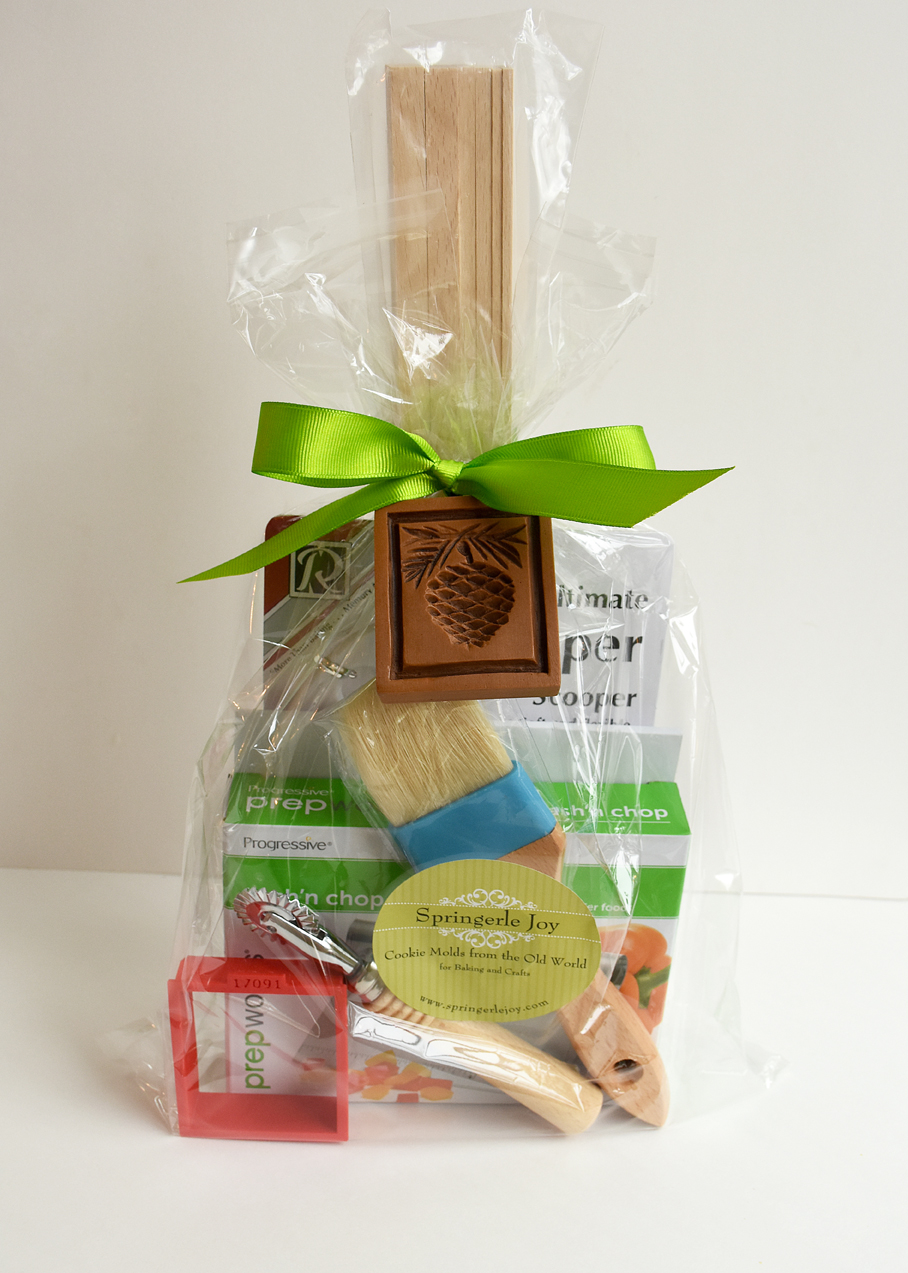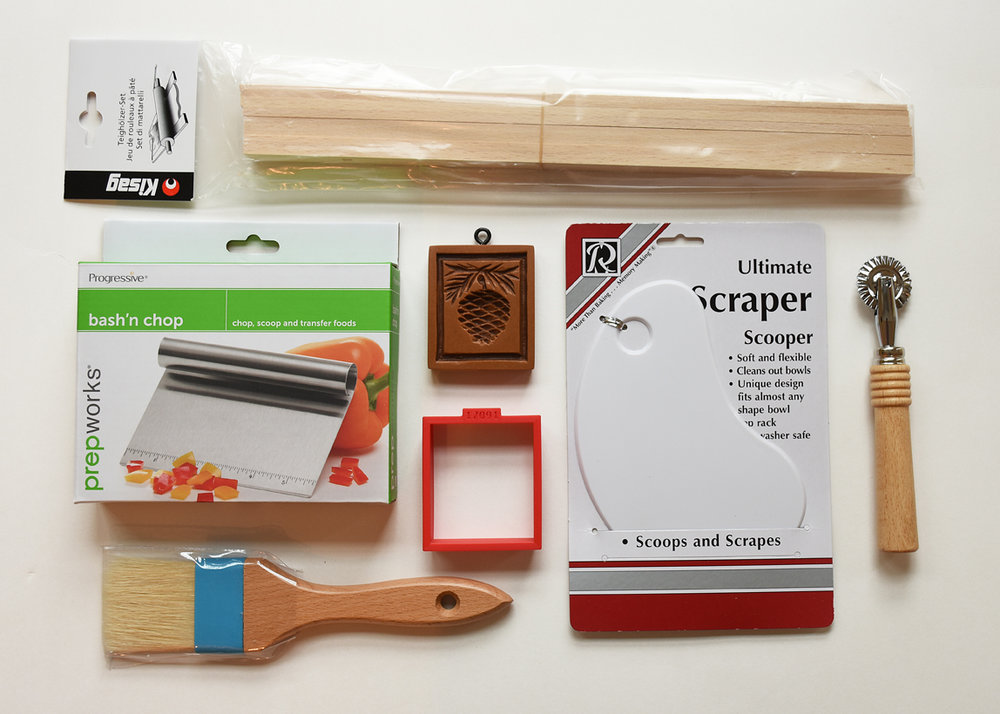Arty: I thought I would introduce this fabulous woman you see below before she shows us the magic of springerle. I met Patrice for the first time in September, a couple of days before CookieCon 2015. We were at Georganne Bell’s house having dinner with all the instructors and preparing for our pre-CookieCon classes the next morning. She was having a fabulous time getting to know the other decorators, and enjoying the evening because she was uber prepared. Not stressing or mixing or coloring icing… not like other people there (ahem, me). That was my first impression of her. This lady has got it together. And now that I know her a little better? This lady has got it together.
Patrice is the awesome combination of friendly and warm AND detail oriented and knowledgeable and she generously shares with others. She has such a passion for what she does and it is contagious. Just try to read her story below and not fall in love with her and her stunning cookies! And if you want to know even more about this beautiful world of Springerle, visit her website.

Springerle Molds – My Favorite Things

I got hooked on springerle molds in the late 90s when my brother-in-law brought home a Christmas mold from Frankenmuth, MI (Michigan’s Little Bavaria).
When I saw it, I loved the intricacy of the 3D art that I could hold in my hand. Best of all, I could make gorgeous cookies without having an artistic gene in my body. (And I don’t—those genes were given to my brother and sister!)

But there was one other hurdle to overcome—the recipe. When I was growing up in Detroit, we had springerle cookies from a German bakery every year. They were in a word, terrible. They were hard and heavily anise-flavored to the point that they numbed my taste buds. They were the last cookies to be eaten on a cookie plate.
But I experimented and discovered that the dough could be deliciously flavored with almost anything (citrus, almond, spices). And the freshly made cookies were soft and chewy. They only became hard when they were not in air-tight containers.

Best of all, the classic recipe was simple—only four ingredients: eggs, powdered sugar, a flavoring, and cake flour.
So, my love affair with springerle molds began. I collected molds from all over the world. I baked cookies for everyone I knew. I even made Christmas tree ornaments and card decorations with my molds.

In 2009 while at a Springerle mold fair in Stuttgart, Germany, I met the owner of Änis-Paradies, a Swiss company with the largest collection of antique reproduction and present-day springerle molds in the world. We spoke in German about the heritage of the molds I was purchasing. After 15 minutes, he asked me: “Would you like to sell these molds in the US?” This was the start of a great adventure!

It’s been a delight sharing my love of this cookie tradition with customers. I teach classes regularly and learn so much from them. Some customers have German baking traditions and share their stories of how the springerle tradition has been passed down for over 100 years. Other students want to establish a tradition within their families as a way of sharing, giving a little bit of love with every cookie they make. Kids and grandkids can make these, so it can be a whole-family activity.

Our easy classic springerle recipe appears below. The cookies retain their design by drying the tops overnight before baking. For faster cookies, we offer other easy recipes on our website that do not require overnight drying—you set up the images by refrigerating the molded cookie for a ½ hour before baking. Either way, the cookies are beautiful and delicious.
Be sure to check out our free how-to videos for making the cookies.
Happy baking!

Classic Springerle Cookies
Ingredients:
-
9 large eggs (USDA Grade A Large in the US) at room temperature
-
2 lb powdered sugar
-
Flavoring options (choose only one edible flavoring oil from the following)
-
1 tsp. Lorann™ anis oil -or-
-
1 tsp. Lorann™ almond oil – or-
-
2 tsp. any Lorann™ fruit flavoring oil (orange, lemon, raspberry…) -or-
-
4 tsp. Lorann™ vanilla, vanilla butternut, bavarian cream, or cinnamon roll flavoring (these flavors tend to be light)
-
-
2 lb cake flour
-
Parchment paper to line cookie sheets
Preparation:
-
Beat the eggs well until the mixture turns into an airy crème. (About 6 minutes using a KitchenAid™ 5qt. stand mixer with the wire whisk attachment.) Immediately, with the mixer on low, add the powdered sugar by ½ cups until all sugar is incorporated and mixture is fluffy. Add the flavoring oil while mixer is on low speed.
-
Immediately switch to the flat paddle attachment and gradually beat in ¾ of the flour on low speed. For hand mixers, knead in the last quarter of the flour by hand or use the bread hook attachment. For stand mixers, beat in the last 1/4 of flour with the paddle attachment. Let the dough rest for 30 minutes to two hours covered on the dough surface with plastic wrap, or cover the top of the bowl with a dish damp dish towel. You need to keep the dough covered to prevent drying on the surface.
Note: In low humidity conditions, do not knead in all the flour. Reserve about a cup. Let the dough rest 30 minutes to two hours. During that time, the flour in the dough will continue to absorb the liquid. You may find that you don’t need to add the cup you reserved.
In humid conditions, you may need to add more flour. If your dough droops quickly off the paddle attachment and is very shiny, you can add more flour (maybe a 1/2 cup) before resting. But when in doubt, let the dough rest 30 minutes first.
-
After resting, if the dough is still saggy/droopy knead in more flour. You want it at a consistency that just holds its shape while still being form-able. It should have the softness of a firm pillow. You can knead in the flour during Step 4, one dough part at a time.
-
Divide the Springerle dough, which still will be sticky, into six parts. Cover the bowl with a damp towel to keep the dough parts moist. Take out one piece and knead in just enough flour so that it is slightly sticky. Roll out on a well-floured surface so that it is 8 mm thick using dough guides or about 3/8″. Lightly dust the rolled dough with flour so that the dough feels like silk. Dust your Springerle mold with flour using a pastry brush. Now press the very finely dusted mold evenly into the dough until the mold cavity is filled, and remove. Cut out the molded dough with a suitable pastry cutter or a knife and place on a baking sheet that has been lined with parchment paper.
-
Next, dry only the top surface of the cookies at room temperature, either on your cookie sheets or on parchment. Do not dry them on a baking rack! You do not want to dry underside of the cookies–you need the bottom moist to develop a foot (rise) while baking. Drying time is typically 8-12 hours at room temperature, 24-36 hours for very humid conditions, thick or large diameter cookies. Never refrigerate the cookies while drying; you need room temperature to evaporate the moisture on the top of the cookies.
To minimize sticking for your small- and medium-size cookies: five minutes before baking, turn the cookies over and dust the bottoms generously with flour. Then turn them back over with the design facing up and slide them around a little bit on your parchment. Do not do this with giant cookies–you risk breaking them.
-
Bake the Springerle one baking sheet at a time at approx. 300ºF on the very bottom rack of the oven. Put like-sized cookies on the same sheet.
Small cookies (2.5″ dia.) can be done in 10-14 minutes at 300°F while larger cookies may take 14-20 minutes and are best baked at 285°F. Giant cookies (10-14 inches in diameter) will take 30-60 minutes and are baked at approx. 260°F.
Cookies are done when the bottoms are a light golden brown. When baking these cookies for the first time, bake just a few on a baking sheet and check often to see how long your cookies take to finish. Everyone’s oven is different. We suggest you get yourself an oven thermometer if you don’t have one.
See our free how-to-videos on YouTube that take you through every step of the recipe.
You can also cut this recipe in half…this is shown in the videos.
If you have any questions using this recipe, feel free to write us at info@springerlejoy.com or call us at 412-977-5378.
“Just like everything else in life, the most important things are: time and love!”—Änis-Paradies
Hey everybody, Kim here. Patrice is SO nice she wanted to share the Springerle Joy with one of you! Look at the amazing gift pack she has graciously donated! If you’d like to win, see the instructions below. The giveaway ends at midnight on Sunday. Good luck!




